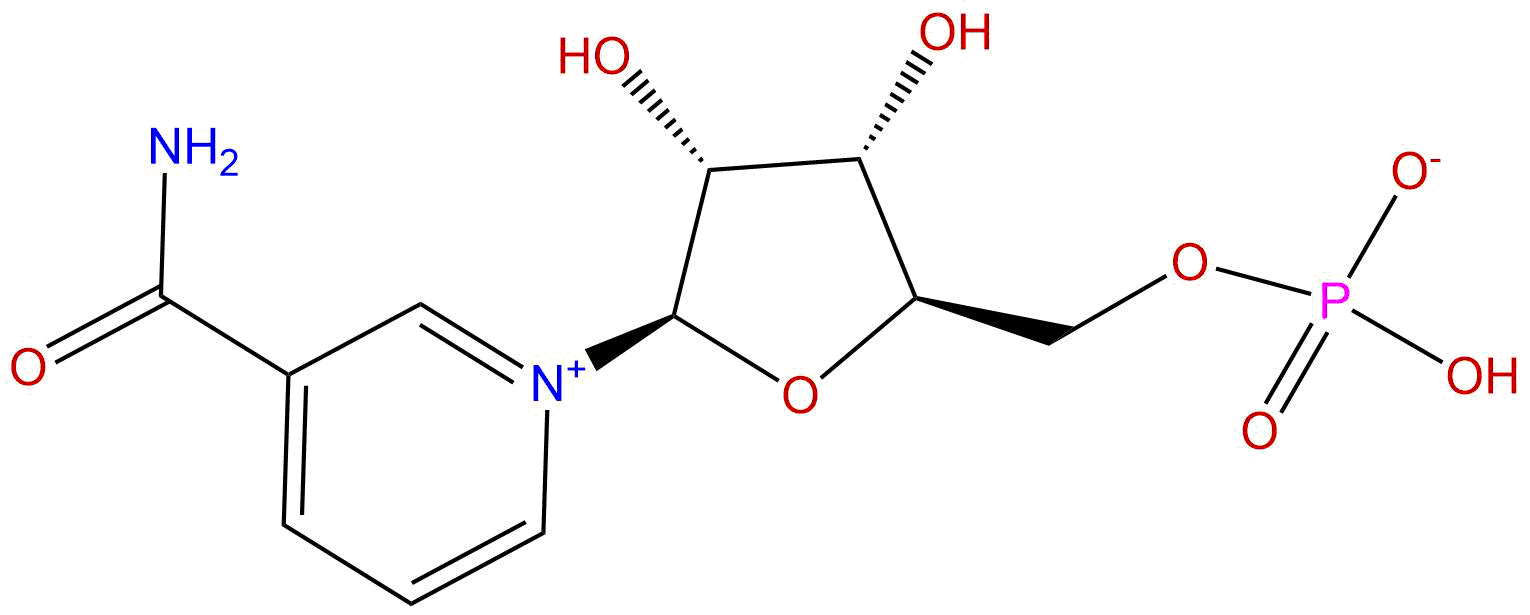
Nicotinamide mononucleotideCAS No.:1094-61-7
|
||||||||||
 |
|
|
||||||||

| Catalogue No.: | BP4241 |
| Formula: | C11H15N2O8P |
| Mol Weight: | 334.221 |
Product name: Nicotinamide mononucleotide;
Synonym name: Nicotinamide ribotide; Nicotinamide ribonucleoside 5'-phosphate; Nicotinamide ribonucleotide
Catalogue No.: BP4241
Cas No.: 1094-61-7
Formula: C11H15N2O8P
Mol Weight: 334.221
Botanical Source:
Type of Compound:
Purity: 95%~99%
Analysis Method: HPLC-DAD or/and HPLC-ELSD
Identification Method: Mass, NMR
Packing: Brown vial or HDPE plastic bottle
The product could be supplied from grams to kilograms.
Inquire for bulk scale.
Nicotinamide mononucleotide ("NMN", "NAMN", and "β-NMN") is a nucleotide derived from ribose and nicotinamide. Like nicotinamide riboside, NMN is a derivative of niacin, and humans have enzymes that can use NMN to generate nicotinamide adenine dinucleotide (NADH). NMN enters cells via the gut within 10 minutes converting to NAD+ through the Slc12a8 NMN transporter. Because NADH is a cofactor for processes inside mitochondria, for sirtuins, and for PARP, NMN has been studied in animal models as a potential neuroprotective and anti-aging agent. Dietary supplement companies have aggressively marketed NMN products claiming those benefits.[5] Doses of up to 500 mg was shown safe in men in a recent human study at Keio University School of Medicine, Shinjuku, Tokyo Japan. Multiple long term human studies are underway.
Nicotinamide ribotide (NMN) is an important intermediate metabolite in the nicotinate and nicotinamide metabolism pathway. Mammals predominantly use nicotinamide rather than nicotinic acid as a precursor for NAD biosynthesis. Instead of the deamidation to nicotinic acid, nicotinamide is directly converted to NMN by nicotinamide phosphoribosyltransferase (NAMPT, EC 2.4.2.12). The enzyme nicotinamide mononucleotide adenylyltransferase (NMNAT, EC 2.7.7.1), which is a member of the nucleotidyltransferase alpha/beta-phosphodiesterase superfamily, catalyzes the reaction NMN + ATP <=> Nicotinamide adenine dinucleotide (NAD) + PPi, representing the final step in the biosynthesis of NAD. NAD is a molecule that plays a fundamental role as a cofactor in cellular redox reactions. Thus NMN is an important metabolite for the maintenance of normal NAD biosynthesis. Circulating NMN levels may play an important role in regulating cell function in physiological and pathophysiological conditions.